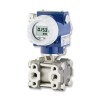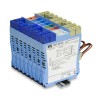Choose an intrinsically safe pressure transmitters with a 4 to 20 milliamp output which is certified for use as part of an intrinsically safe installation which includes an intrinsically safe barrier for limiting the amount of electrical power that can enter a zone which contains a flammable risk atmosphere.
Products
 DMK 458 Seawater Low Range Pressure Transmitter - Sea water corrosion resistant low range pressure transmitter for marine, ship and offshore engineering.
DMK 458 Seawater Low Range Pressure Transmitter - Sea water corrosion resistant low range pressure transmitter for marine, ship and offshore engineering.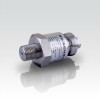 DMK351 Liquid and Gas Resistant Intrinsically Safe Low Range Gauge Pressure Sensor - Intrinsically safe liquid & gas resistant low range pressure gauge reference pressure sensor for CHP, biogas and landfill sites.
DMK351 Liquid and Gas Resistant Intrinsically Safe Low Range Gauge Pressure Sensor - Intrinsically safe liquid & gas resistant low range pressure gauge reference pressure sensor for CHP, biogas and landfill sites.
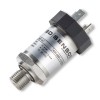 DMP457 Marine Approved Pressure Transmitter
DMP457 Marine Approved Pressure Transmitter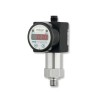 DS210 Combined Low Pressure Switch, Indicator and Sensor
DS210 Combined Low Pressure Switch, Indicator and Sensor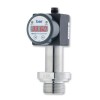 DS200P Sanitary Low Range Pressure Gauge, Switch and Sensor
DS200P Sanitary Low Range Pressure Gauge, Switch and Sensor DMK 331 Ceramic Diaphragm Industrial Pressure Transmitter
DMK 331 Ceramic Diaphragm Industrial Pressure Transmitter
Applications
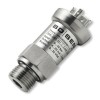 Anaerobic digestion methane gas 2bar pressure transmitter - ATEX pressure transmitter to measure the pressure of methane gas line in an anaerobic digestion plant.
Anaerobic digestion methane gas 2bar pressure transmitter - ATEX pressure transmitter to measure the pressure of methane gas line in an anaerobic digestion plant.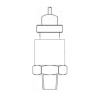 20 inH2Og range 4-20mA output natural gas pressure transducer for commercial generator use - An intrinsically safe low gauge range pressure transducer for use on commercial generators to measure pressure of natural gas over a range of 0 to 20 inH2O g from the 1/2 NPT male process connection, and sending the corresponding 4-20mA signal through the weatherproof cable electrical connection.
20 inH2Og range 4-20mA output natural gas pressure transducer for commercial generator use - An intrinsically safe low gauge range pressure transducer for use on commercial generators to measure pressure of natural gas over a range of 0 to 20 inH2O g from the 1/2 NPT male process connection, and sending the corresponding 4-20mA signal through the weatherproof cable electrical connection.
 Bulk powders silo fluidisation blower aeration ATEX approved HART pressure transmitter
Bulk powders silo fluidisation blower aeration ATEX approved HART pressure transmitter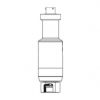 Oil field equipment testing 20,000 psi g 4-20mA out freshwater pressure sensor
Oil field equipment testing 20,000 psi g 4-20mA out freshwater pressure sensor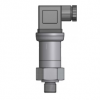 Natural gas buffer tank 5 barg 4-20mA output natural gas pressure transmitter
Natural gas buffer tank 5 barg 4-20mA output natural gas pressure transmitter 150 psi absolute IS 4-20mA oxygen clean pressure transducer for research use
150 psi absolute IS 4-20mA oxygen clean pressure transducer for research use
- -3 to 4 mbar dp range 4-20mA ATEX approved biogas pressure sensor for process control use on a 1bar line
- 6,000 psig ATEX/IECEx IS approved 4-20mA pressure sensor for oil pumping use
- 1 barg IS certified 4-20mA submersible leachate pressure sensor for tank level gauging use
- -1 to 20 bar g compound range IS 4-20mA propane pressure sensor for process control use
- 1 inH2O differential intrinsically safe 4-20mA out air pressure sensor for HVAC use
- 1 mbar range 4-20mA output biogas pressure transmitter for controlling blower fan connected to a covered lagoon
Product Types
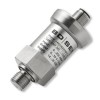 Low Pressure Range Intrinsically Safe Pressure Transmitters - 4-20mA current loop output pressure transmitters with intrinsically safe (IS) certification, and low pressure scale operating range.
Low Pressure Range Intrinsically Safe Pressure Transmitters - 4-20mA current loop output pressure transmitters with intrinsically safe (IS) certification, and low pressure scale operating range.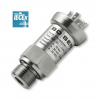 Landfill Site Intrinsically Safe Pressure Transmitters - Intrinsically safe certified for use in hazardous areas. 4-20mA current loop output pressure transmitters for use on landfill sites where an area of land that is used to bury waste material.
Landfill Site Intrinsically Safe Pressure Transmitters - Intrinsically safe certified for use in hazardous areas. 4-20mA current loop output pressure transmitters for use on landfill sites where an area of land that is used to bury waste material.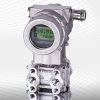 Underground Mining Intrinsically Safe Pressure Transmitters - Pressure transmitters which have been approved for use with intrinsically safe installations in underground mines.
Underground Mining Intrinsically Safe Pressure Transmitters - Pressure transmitters which have been approved for use with intrinsically safe installations in underground mines.
Related Product and Application Guides
Intrinsically safe approved instrumentation can be installed in hazardous areas zones and connected to other appropriate intrinsically safe equipment. Intrinsic safety is achieved by limiting the amount of electrical power that can enter the protected zone by incorporating zener diode or isolation transformer barriers, and ensuring a certain surface temperature is not exceeded and there are no electrical discharges which may otherwise ignite a potentially explosive atmosphere.
Pressure transmitters are measurement devices which combine amplified 4 to 20 milliamp current loop output signal conditioning electronic module with a transducer for measuring the pressure of a liquid, vapour or gas.

